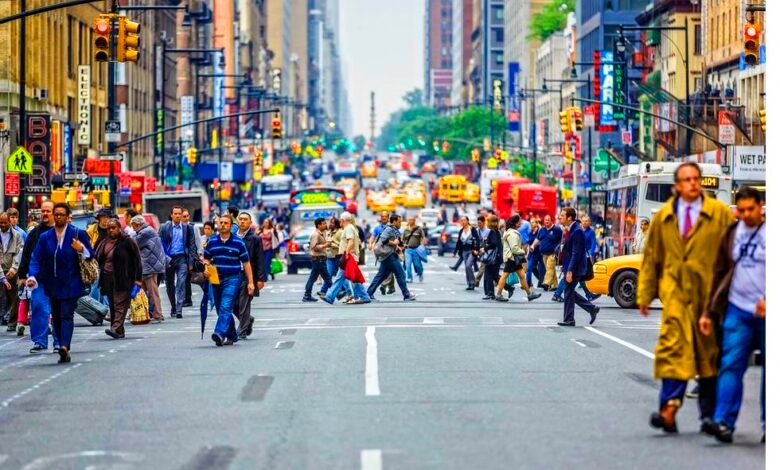Integration or Segregation? Examining Immigration in Urban Environments

Immigration, a phenomenon as old as civilization itself, continues to shape the dynamics of urban environments worldwide. As populations migrate across borders for better opportunities, integration versus segregation looms large, particularly in densely populated urban centers. This comprehensive exploration delves into the intricate interplay of immigration, integration, and segregation in urban environments, uncovering the challenges, opportunities, and implications for communities.
Immigration in Urban Environments
Urban environments, characterized by diversity, density, and dynamism, serve as magnets for immigrants seeking refuge, employment, and cultural exchange. In cities like New York, London, and Mumbai, the influx of immigrants has contributed to the rich tapestry of cultures, languages, and traditions that define these global metropolises. However, integrating immigrants into urban communities has complexities and controversies.
Definition of Immigration
Immigration, simply put, refers to the movement of individuals from one country or region to another to settle permanently. Whether driven by economic, social, or political factors, immigrants bring a wealth of skills, talents, and perspectives that enrich urban landscapes.
Significance of Immigration in Urban Settings
The significance of immigration in urban settings cannot be overstated. From revitalizing declining neighborhoods to fueling innovation and entrepreneurship, immigrants are vital in driving cities’ economic growth and cultural vibrancy. Moreover, immigration contributes to demographic diversity, fostering creativity, tolerance, and resilience in urban communities.
Historical Context of Immigration
To understand the present-day dynamics of immigration in urban environments, it is essential to examine its historical roots. Throughout history, cities have served as melting pots of cultures, where immigrants from diverse backgrounds converge, coexist, and contribute to the collective tapestry of urban life.
Early Waves of Immigration
From the Irish immigrants who fled famine in the 19th century to the African Americans who migrated north during the Great Migration, cities have been shaped by successive waves of immigration. These influxes of people have left an indelible mark on urban landscapes, influencing everything from architecture and cuisine to music and literature.
Impact on Urban Development
The impact of immigration on urban development is profound and multifaceted. Immigrants have played a pivotal role in building cities, from constructing iconic landmarks to laboring in factories and sweatshops. Moreover, immigrant communities have often been at the forefront of urban revitalization efforts, breathing new life into neglected neighborhoods and spurring economic growth.
Integration vs. Segregation: Understanding the Concepts
At the heart of the immigration debate lies the tension between integration and segregation. While integration entails the full participation of immigrants in their host society’s social, economic, and political life, segregation refers to the spatial and social isolation of immigrant communities from the mainstream.
Definitions of Integration and Segregation
Integration encompasses a range of processes, including language acquisition, cultural assimilation, and social interaction, that enable immigrants to become active members of their host communities. In contrast, segregation manifests in the form of ethnic enclaves, linguistic ghettos, and social barriers that impede immigrants’ integration into broader society.
Importance of Integration in Urban Communities
Integration is essential for fostering social cohesion, promoting economic prosperity, and building inclusive communities in urban environments. When immigrants are fully integrated into their host societies, they bring diverse perspectives, talents, and experiences that enrich cities’ cultural and social fabric.
Challenges of Segregation in Immigration Patterns
Segregation, on the other hand, poses significant challenges to urban communities. When immigrants are confined to isolated enclaves, opportunities for social interaction, economic mobility, and cultural exchange are limited, leading to social divisions, inequalities, and tensions within cities.
Factors Influencing Integration
Several factors influence the extent to which immigrants integrate into urban communities, including economic, social, and political factors.
Economic Factors
Access to employment, education, and housing are crucial determinants of immigrants’ integration outcomes. Economic opportunities provide immigrants with the means to support themselves and their families and enable them to contribute to the broader economy through taxation and consumption.
Social Factors
Social integration involves more than just economic participation; it encompasses social relationships, cultural practices, and a sense of belonging. Language proficiency, social networks, and intercultural competence are essential for immigrants to navigate the complexities of urban life and forge meaningful connections with native-born residents.
Political Factors
Immigration policies, attitudes toward diversity, and the availability of social services also influence immigrants’ integration experiences. Cities that adopt inclusive policies, such as sanctuary cities and municipal ID programs, are more likely to foster integration and support immigrant communities in their quest for belonging and acceptance.
Read More: Credit Counseling: A Lifeline for People in Financial Difficulties
Case Studies of Integration Success
While the challenges of immigrant integration are significant, there are also success stories that offer valuable lessons for urban policymakers and community leaders.
Cities with Successful Integration Models
Cities like Toronto, Canada, and Melbourne, Australia, are often cited as examples of successful immigrant integration. These cities have embraced diversity as a source of strength and implemented policies and programs to promote social inclusion, economic opportunity, and civic engagement among immigrant communities.
Strategies Employed for Fostering Integration
Cities have deployed various strategies to facilitate immigrant integration, from language classes and job training programs to community outreach initiatives and cultural festivals. By providing immigrants with the tools and resources to succeed, cities can ensure that newcomers can fully participate in and contribute to urban life.
Challenges and Barriers to Integration
Despite the progress in promoting immigrant integration, numerous challenges and barriers persist.
Language Barriers
Language proficiency is crucial to immigrants’ access to education, employment, and social services. Limited English proficiency can impede immigrants’ integration prospects and perpetuate social isolation and economic marginalization.
Cultural Differences
Cultural differences and misunderstandings can also pose barriers to integration. Immigrants may face discrimination, stereotyping, and prejudice based on their ethnicity, religion, or nationality, which can undermine their sense of belonging and impede their ability to participate in urban life fully.
Economic Disparities
Economic disparities between immigrants and native-born residents can exacerbate social inequalities and hinder immigrants’ integration prospects. Limited access to affordable housing, quality education, and healthcare can perpetuate cycles of poverty and exclusion among immigrant communities.
Impact of Segregation on Urban Environments
Segregation undermines the social cohesion and inclusivity of urban communities and has broader socioeconomic implications.
Socioeconomic Consequences
Segregated neighborhoods tend to have higher levels of poverty, crime, and unemployment, which can perpetuate cycles of disadvantage and social exclusion. Moreover, the spatial concentration of poverty can strain local resources and undermine the quality of life for residents living in these areas.
Community Cohesion
Segregation also erodes community cohesion and trust, as residents from different ethnic, racial, and socioeconomic backgrounds have limited opportunities for interaction and collaboration. Without social ties and shared experiences, urban communities may become fragmented and polarized, exacerbating social tensions and conflicts.
Policy Implications and Solutions
Addressing the integration-segregation dilemma requires a comprehensive and collaborative approach involving policymakers, community leaders, and residents.
Importance of Inclusive Policies
Inclusive policies that promote diversity, equity, and social cohesion are essential for creating welcoming and inclusive urban environments. From affordable housing initiatives to language access programs, cities can adopt various policies to support immigrant integration and ensure all residents have equal opportunities to thrive.
Role of Local Governments and Communities
Local governments play a crucial role in shaping immigration policies, allocating resources, and providing services that meet the needs of immigrant communities. However, community engagement and grassroots initiatives are equally crucial for fostering trust, solidarity, and mutual respect among residents from diverse backgrounds.
The Future of Immigration in Urban Environments
As global migration patterns continue to evolve, the future of immigration in urban environments remains uncertain.
Trends in Immigration Patterns
Rapid urbanization, demographic shifts, and geopolitical changes will likely shape the dynamics of immigration in the years to come. Climate change, conflict, and economic instability are also expected to drive new waves of migration, posing challenges and opportunities for urban communities.
Potential Outcomes Based on Current Trajectories
Depending on how cities respond to these challenges, the outcomes of immigration in urban environments could vary widely. Inclusive, welcoming cities that embrace diversity and promote integration will likely thrive. In contrast, cities that resort to exclusionary policies and practices may face social unrest, economic stagnation, and political polarization.
Read More: Making a Plan for Your Financial Future After Bankruptcy
Conclusion
In conclusion, the integration-segregation dilemma is a complex and multifaceted issue that requires careful consideration and concerted action. While immigration enriches urban environments in myriad ways, ensuring that immigrants are fully integrated into their host societies remains daunting. By fostering inclusive environments, promoting diversity, and addressing barriers to integration, cities can harness the full potential of immigration and create vibrant, resilient communities for generations to come.
FAQs
What are the main benefits of immigration in urban environments?
Immigration brings diversity, cultural enrichment, and economic vitality to cities, driving innovation and growth.
How can cities promote integration among immigrant populations?
Cities can promote integration through inclusive policies, language programs, and initiatives that foster social cohesion and mutual understanding.
What role do local governments play in addressing the integration-segregation dilemma?
Local governments play a crucial role in shaping immigration policies, supporting integration initiatives, and creating inclusive communities.
What are some common barriers to immigrant integration?
Language barriers, cultural differences, and economic disparities are critical barriers to immigrant integration in urban environments.
How can residents contribute to creating welcoming and inclusive communities for immigrants?
Residents can contribute by fostering intercultural dialogue, supporting immigrant-owned businesses, and challenging stereotypes and prejudices.











